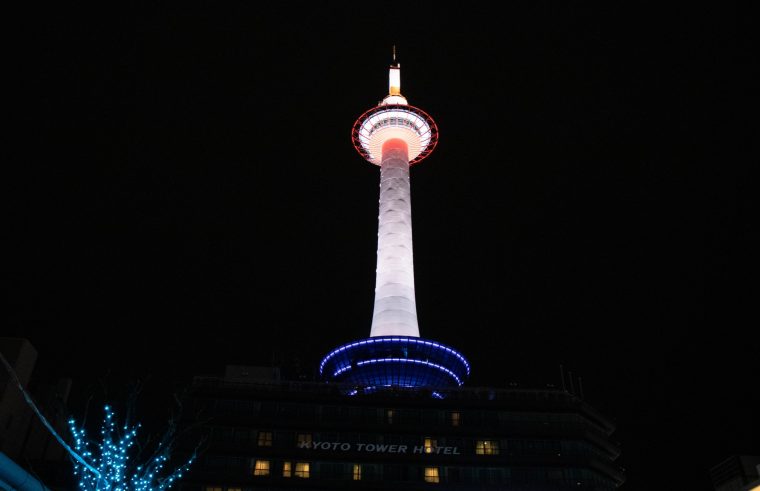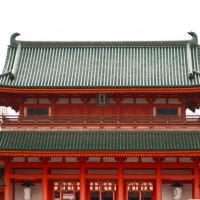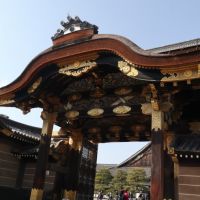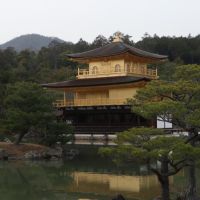The Attraction Guide about of Kyoto in Japan
S-fleage
S-fleage is a Kyoto-based company. We are proud to introduce the charms of Kyoto to the world. We hope this article will help you to experience Kyoto.
Latest posts by S-fleage (see all)
From exploring the wonders of the Arashiyama Bamboo Forest to seeing the sunlight glimmer off the Golden Pavilion of Kinkaku-ji, our extensive Kyoto guide will offer you everything you need to make your trip to Japan an unforgettable one!
Not only will you get the inside scoop on the very best attractions and sights that Kyoto has to offer, but this guide will also provide you with all the most useful tips about Kyoto(history, weather, the ways to help you enjoy Kyoto, and so on) and tricks to make your trip as smooth and enjoyable as possible (temple hunting, strolling in Gion, Nishiki market, and so on).
Everything from the temple hoping to rickshaw riding is covered for your convenience, so let’s make your Kyoto trip a once in a lifetime experience that you will never want to end!
Contents
What kind of place in Kyoto?
The History of Kyoto
Kyoto (lit. Capital City), located in the Kansai region of Japan, owes much of its wonder and charm to its former position as Japan’s capital city from 794 AD to 1868 AD. When it served as the emperor’s residence, the city’s economy flourished and gave birth to countless beautiful palaces, temples, and shrines that are the envy of the world. Fortunately, many of these historically important sights and buildings are still standing today, as Kyoto was spared the ravages of Allied bombing during WWII. Exploring the Gion District or Ninenzaka area almost makes you feel as though you have traveled back in time!
Tips to Help You Enjoy Kyoto
Kyoto Weather and Cautionary Note
Below is a graph of the temperatures for each month to give you an idea of what to expect.
| Celsius | Fahrenheit | |
| January | 9 | 48 |
| February | 10 | 49 |
| March | 13 | 56 |
| April | 20 | 68 |
| May | 25 | 76 |
| June | 28 | 82 |
| July | 32 | 89 |
| August | 33 | 92 |
| September | 29 | 84 |
| October | 23 | 73 |
| November | 17 | 63 |
| December | 12 | 53 |
Kyoto is located slap-bang in a valley, causing hot summers and cold winters. The temperature change between seasons, particularly winter and spring, is sudden and drastic. If you are traveling during this time, make sure you bring clothes for both seasons.
Heatstroke is a constant problem in the humid Kyoto summers, so make sure you always carry some water with you. Those who are not used to such a climate can be caught off-guard, so lather on the sunscreen, and fill your suitcase with shorts and t-shirts beforehand.
The winter can also be surprisingly cold, even if you are used to the brutal winters of Europe and North America. If you are coming in winter, make sure to pack some coats and extra layers. In the cold months, Japanese convenience stores sell hand warmers called Kairo, which are essential if you plan to explore the city on a wintery night.
You should visit Kyoto in early Spring!
You will have a much more comfortable visit if you come to Kyoto in March or early April. This season is less crowded and you can see the flowers of a palm tree and luckily, you can take a picture of cherry blossom. You should try to avoid coming to Kyoto during the rainy season in June-July and the typhoon season in September, as there will be lots of rain and frequent closures of attractions. You should also do your best to avoid the big Japanese holiday: Golden Week. In Golden Week (April 29th to early May), most of the country is on holiday, so both Japanese and foreign tourists descend on Kyoto. The temples, shrines, trains, buses and just about everything is very crowded, and hotels become more expensive.
The tourist information center is very kind!
You should always have a map at hand when you are traveling around Kyoto. Wi-Fi can be hard to come by in Kyoto, especially if you are traveling to more rural areas like Arashiyama. In Kyoto Station, there is a tourist information center where you can pick up maps, brochures and other pieces of information for free! The maps are very detailed, contain some great walking courses, and tell you what trains to take to get around. There are also English-speaking staff members there ready to help you and answer your questions. At the exit of every train/subway station is also a local map of the surrounding area. I recommend you take a picture of these maps with your smartphone or camera, so you can refer to it if you get lost.
The useful ways to Get Around
Japan Rail Pass
Whether you are traveling to Kyoto from Tokyo or Osaka, getting a Japan Rail Pass before arriving in Japan is essential, especially if you intend to use the bullet train or stay in Japan for a while. Not only will you save a bit of money, but you will also avoid having to wait in line to buy train tickets over and over again. You can purchase a Japan Rail Pass online from outside of Japan, and receive it at ticket offices in Japan. Do not forget to bring your passport when you pick it up, as you need to show it for proof of identification!
The detail of JR Pass is here:
Japan Rail Pass -Your sightseeing passport to Japan-
1-day bus pass
Kyoto has a great system of public and private transportation systems. Getting around on the bus is easy with the 600 yen day bus pass. With this ticket, you can ride on any city or Kyoto bus (not JR buses) and travel as many times as you like for a day! Taxis are also quite cheap and easy to come by just wave one down as you do back home. They know where the best attractions are, but make sure you have an address if you are going to your hotel. Suica cards (prepaid travel cards) are very convenient for traveling on buses and trains. You can purchase one of these from ticket machines at most train stations!
The detail of the 1-day bus pass is here:
Rental Bike
Kyoto has many buses and trains, but often they are crowded, hard to navigate and tiresome. With beautiful temples and shrines so close together, why not just rent a bicycle? In Kyoto, you can even rent bicycles for as little as a day for a reasonable price! Even some hotels offer them to guests! Kyoto has few hills and large cycling lanes, making for a very enjoyable location for cycles. So enjoy the sights and burn some calories!
If you are interested in trental bike, please check here:
The 5 Best Rental Bike Shop in Kyoto
Payment in Japan
Japan is mostly a cash society, and therefore have lots of cash with you is better and more convenient than carrying credit or debit cards, especially if you wish to purchase things such as train tickets or souvenirs from local shops in Higashiyama. Japan is very safe, so don’t worry about carrying lots of cash on your persons.
If you are interested in payment in Japan, please check here:
Cash or Cards? Methods of Payment in Japan
Things You Should do in Kyoto
Go around The Temples in Kyoto
Scattered all over Kyoto are countless temples and shrines that bring life to the deep history of Japan, and Kyoto’s significance in religion. Many of these temples, such as Ryoan-ji and Kinkaku-ji, are surrounded by beautiful Zen and green gardens, making for ideal photo shoots. I suggest you make your way up to Kiyomizu Temple early in the morning to appreciate the beautiful views and pagodas without all the hustle and bustle of crowds of tourists before making your way down the steps of Sannenzaka and Ninenzaka (the old Kyoto) to explore the grand Chion-in, a temple with the largest wooden gate in all of Japan! The stairs in front of this temple are perfect for a big family shoot!
Spending the Rich Time in Gion at Night
Ever pictured feudal Japanese streets full of kimono girls and geisha, just like those old samurai movies? Well, Gion’s the place where that is a reality! Gion is part of old Kyoto: it’s winding, traditional streets are full of quaint restaurants and shops. But its beauty comes out at night. Dotted all over the Gion streets are traditional Japanese lanterns that shine red, yellow and white throughout the area, making for some truly breath-taking scenes. A personal tip of mine is to go there on a rainy night: the water on the stone-cobbled ground reflects the light, giving a truly unforgettable image. Gion is located conveniently close to Ninenzaka and Kiyomizu-dera (about a 10-minute walk), so I recommend you visit Gion after traveling there!
If you are interested in the nightlife in Kyoto, please check it out:
Best Kyoto Nightlife – Bar, Club, Maiko, Night View
Immerse yourself in the art of Japanese craftsmanship with the Hochoshiki Knife Ceremony, an experience that honors the centuries-old traditions of samurai swordsmiths. This unique ceremony not only showcases the meticulous process of crafting Japanese knives but also offers an intimate look at the profound cultural significance behind these masterpieces. A visit to the Hochoshiki Knife Ceremony is a must for those who appreciate the blend of history, art, and functionality in Kyoto’s rich cultural tapestry.
https://www.hochoshiki-knifeceremony.com/
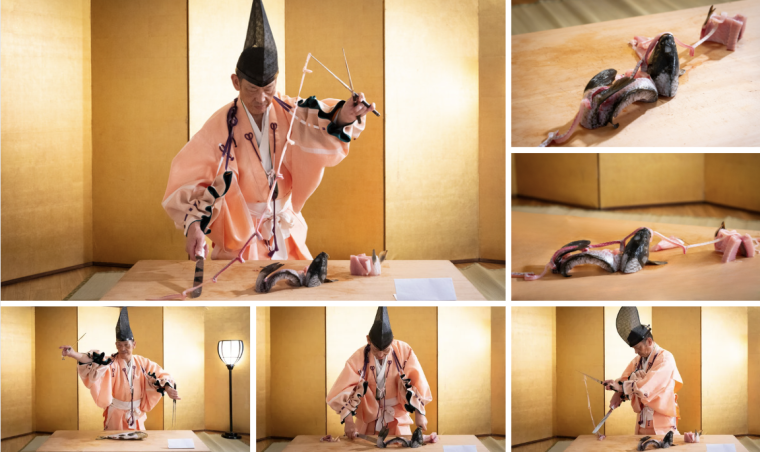
A sacred place for Japanese food, a treasure house of ingredients, Minami-Boso Takaya Shrine Kitchen knife ceremony "Ryumon-no-Koi" long story: edited by Minamiboso City Tourism Association Channel
Riding on a Rickshaw
Rickshaws are a cool and relaxing way of seeing the beautiful sights of Kyoto. Hop on a rickshaw by the famous Togetsu-kyo Bridge in Arashiyama (10-minute walk from Arashiyama Station) and be taken on an adventure through the beautiful bamboo forest, all the while being told the local history by the friendly pullers. Courses go for as short as 12 minutes to as long and 120 minutes, and prices begin at 3,000 yen. Just wander over a rickshaw puller and ask for a ride!
Here is the URL of Ebisuya, the rickshaw shop:
Eating out in Ponto-Cho
Like Gion, Ponto-Cho has preserved much of its traditional architecture and history. The area is particularly great for unwinding in the evenings. Why not chill out after a day of traveling by eating out at one of the many yakiniku or okonomiyaki restaurants, some of the best foods Japan has to offer! It can be a little pricy compared to other restaurants in Shijo, but I highly recommend it at least once for an authentic Japanese experience.
The details of the restaurants in Pontocho is in the below:
The Best 7 Restaurants and Bars in Pontocho, Kyoto
Eat and Walk around Nishiki Market
Nishiki Market is a great place to go if you want to try many types of traditional Japanese foods on the cheap. You can buy lots of Japanese snacks like takoyaki, or simply see immerse yourself in the sights and smells of Japanese markets. It can be a little crowded during the afternoon, so best to avoid bringing a backpack or other luggage with you.
Address: 〒604-8054 Kyoto, Nakagyo Ward, Tomikoji-dori, Shijo-noboru, 609
Top 5 Places to Visit in Kyoto
Arashiyama
Arashiyama is one of the most picturesque places in Kyoto. Not only is there the world-famous bamboo grove, but you can also visit the magnificent Togetsu-kyo Bridge. If you come in spring or fall, you can witness some great views of cherry blossoms and autumn leaves covering the slopes of Arashiyama in the backdrop of the bridge. Speaking of the slopes, there is a really fun monkey park with over 170 monkeys located there! A great place to visit if you are traveling with kids, and only 550 yen per person! You can catch a train directly from Kyoto Station on the San-in Line for 240 yen.
Address: Arashiyama Higashiichikawacho, Nishikyo Ward, Kyoto, 616-0002
Higashiyama District (Kiyomizu Temple, Ninenzaka, Sannenzaka)
The Higashiyama District of Kyoto is just oozing with Japanese history and culture. The remarkably preserved shops and restaurants that line the stone-cobbled streets make it an essential place to visit for those who wish to experience traditional ‘old Kyoto’. Climbing the steps of Ninenzaka will make you think you are back in feudal Japan! I suggest you begin your day by visiting Kiyomizu Temple very early in the morning (opens from 6 am) to avoid the crowds and get those great morning shots. This beautiful temple is only 300 yen to enter and is located within walking distance from other great temples.
Address: Reference to Google map
Recommended English page: https://www.japan-guide.com/e/e3959.html
Kifune Shrine
Situated in the northern hills of Kyoto lies the stunning Kifune Shrine: a remarkable Shinto shrine. Ride the train up from Demachiyanagi Station through lush forested slopes and hop on a city bus to reach the stairs flanked by traditional Japanese lanterns. Open from 6 am to 8 pm, it’s great at any time, but if you are lucky, you may see the lanterns light up at night. Highly recommended for nature lovers, as the forested hills and rivers are a sight to behold.
Address:〒601-1112 Kyoto, Sakyo Ward, Kuramakibunecho, 180
HP: http://kifunejinja.jp/ (Japanese page only)
https://www.insidekyoto.com/kurama-to-kibune-hike (Recommended English page)
Kinkaku-ji
This unique World Heritage site is popular all year round with foreign and Japanese tourists alike. Known as the “Golden Pavilion” in English, this beautiful golden temple, open from 9 am, is just a bus away from Kyoto Station and 400 yen to enter. If you visit Kyoto, it’s almost mandatory to get a photo of this temple! Don’t forget to walk around the garden and sample the delicious golden leaf ice cream!
Address: Kinkakujicho, Kita Ward, Kyoto, 603-8361
HP: http://www.shokoku-ji.jp/k_about.html(the official site has only Japanese page)
https://kinukake.com/en/sights-kinkakuji.html (Recommended English site)
Fushimi Inari Shrine
Perhaps the most famous shrine in all of Japan, Fushimi Inari is known for its 1,000 shrine gates (tori). A must-see location, it is said that your desires will come true if you pass through the gates. As it is open 24/7 and free, you can enjoy the shrine anytime! Catch a local train on the Nara Line from Kyoto Station for just 140 yen and have the experience of a lifetime! Don’t forget your walking boots!
Address: 68 Fukakusa Yabunouchichō, Fushimi Ward, Kyoto, 612-0882
Where to Stay in Kyoto
If you would like to stay in downtown(Kyoto station, Higashiyama, Gion), don’t miss this page.
If you would like to stay in downtown(Kyoto station, Higashiyama, Gion), don’t miss this page.
Five suggestions of where to stay around Arashiyama
Conclusion
Thank you for reading this article! Kyoto has many sightseeing spots.
I hope you guys will be able to spend a great time and experience an unforgettable one using this guide.
I hope you all will have a good trip in Kyoto, Japan.
Best regards.

